To Red Square in slippers: When there were communal apartments in GUM
Categories: History
By Pictolic https://pictolic.com/article/to-red-square-in-slippers-when-there-were-communal-apartments-in-gum.htmlWith the advent of capitalism, the State Department Store on Red Square changed its status. Now the cream of society is being bought there, and in Soviet times it was almost the most popular department store in the country. People came to GUM not only for shopping, but also to listen to a concert or just walk through the beautifully decorated galleries.
And once among the visitors you could see people in home clothes. Until the 50s, there were communal apartments on the second and third floors of GUM, in which ordinary Muscovites lived.
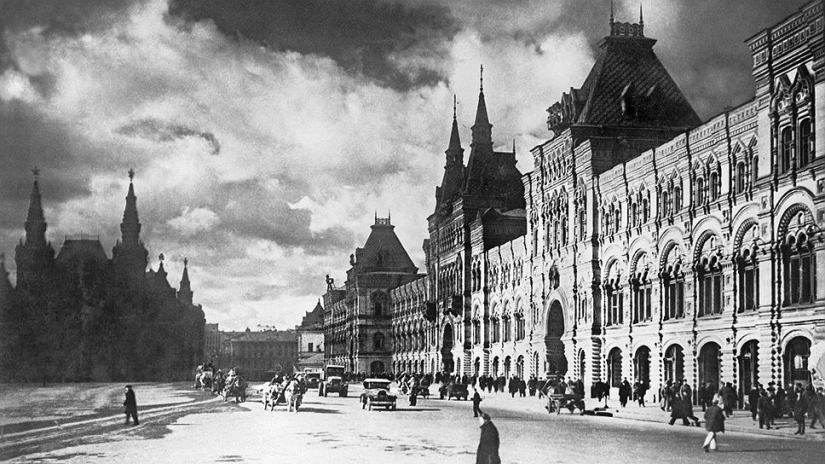
"In the 1930s and 1940s, GUM did not exist as a single thing, it was a set of completely different formations gathered under one roof. Firstly, trade: there have always been shops, but they were located only on the 1st floor of the second and third lines. They traded in various materials (fabrics), stationery, there was a grocery store on the Nikolskaya side, half of it was occupied by the Tsekov special distributor, and the other half was an ordinary store.
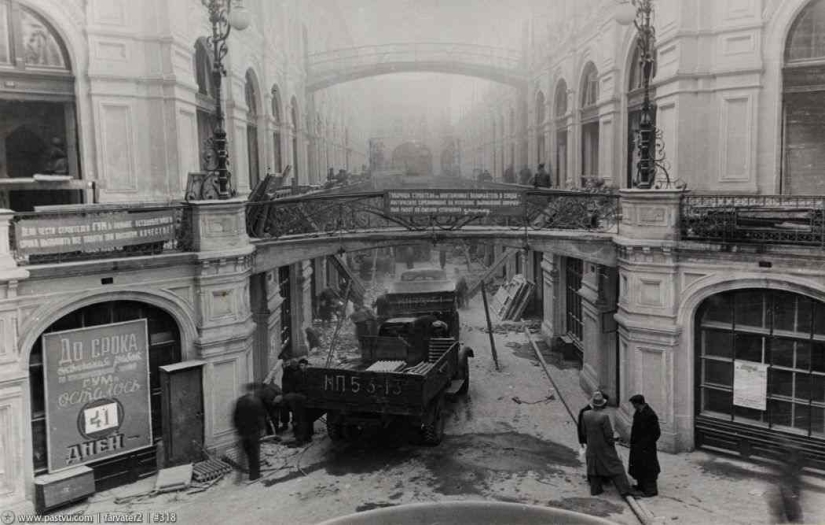
In the 20s, housing in the capital was sorely lacking. Therefore, the warehouses on the upper floors of GUM (it was opened under the tsarist government, in 1893) decided to be converted into communal apartments. Life in them was not so sweet. During the parades, residents were forbidden to approach the windows. There were no shared kitchens — they cooked right in the rooms. If guests came to someone, it was necessary to report it to the commandant's office.
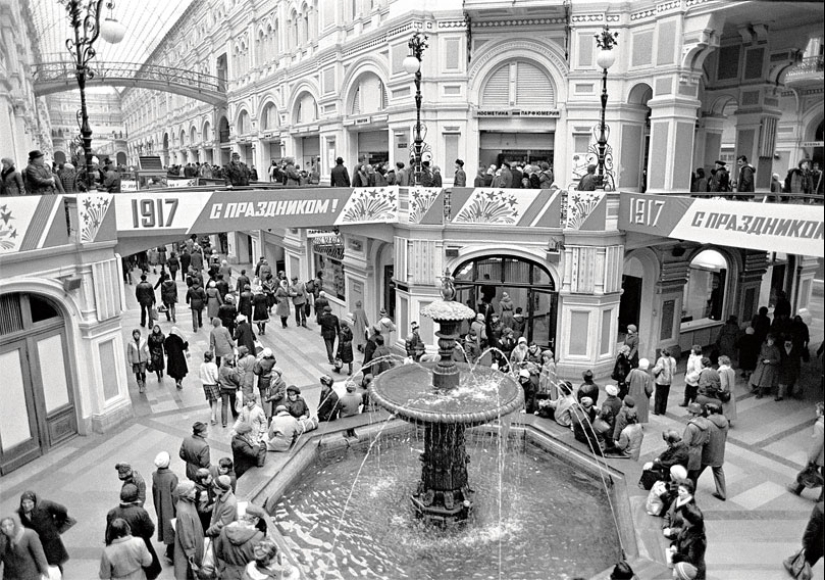
Nevertheless, the residents felt in a privileged position. They could enjoy the view of the fountain in the center of the building and the sounds of a brass band. Concerts and films were often shown in the hall for workers of the Central Committee of the CPSU. GUM residents were among the guests of these events. In addition, they could walk around Red Square and the Alexander Garden at any time and enjoy the feeling of life in the heart of Moscow every minute.
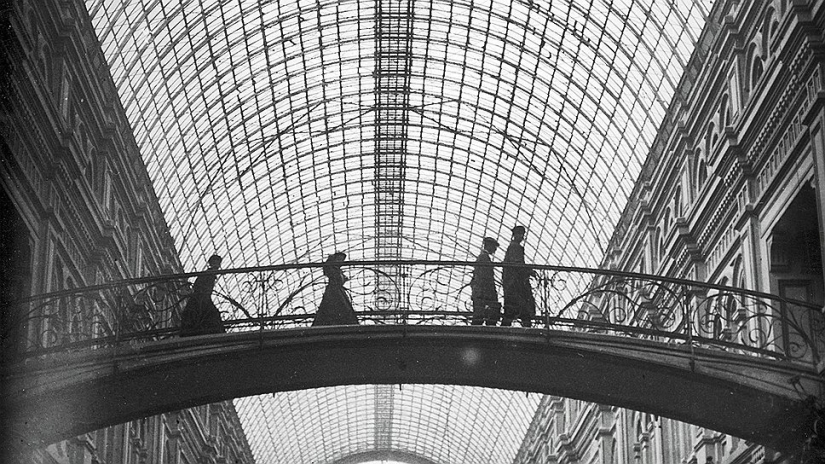
Eleonora Garkunova, a Spanish teacher, lived in a communal apartment in GUM for the first 25 years of her life, from 1928 to 1953. Her story is given in the book "The Main department Store"."In the 1930s and 1940s GUM as something single did not exist, it was a set of completely different entities gathered under one roof. Firstly, trade: there have always been shops, but they were located only on the 1st floor of the second and third lines. They traded in various materials (fabrics), stationery, there was a grocery store on the Nikolskaya side, half of it was occupied by the Tsekov special distributor, and the other half was an ordinary store.
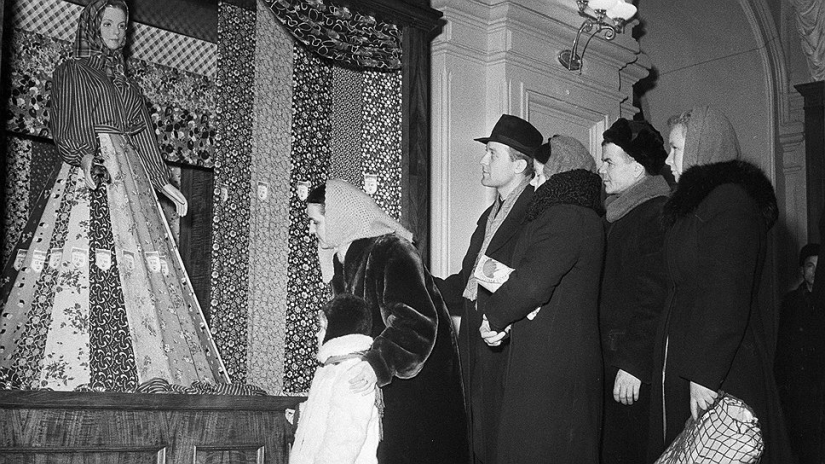
At 8 in the morning, when the doors opened, there was a patter of feet all over the GUM, people on duty from the night were in a hurry to take a queue in the departments — even in our room it was audible. We determined the time by this noise (and also by the Kremlin chimes that were visible from the window). But there was no crush in GUM at that time. After the war, many things could be bought without waiting in line.
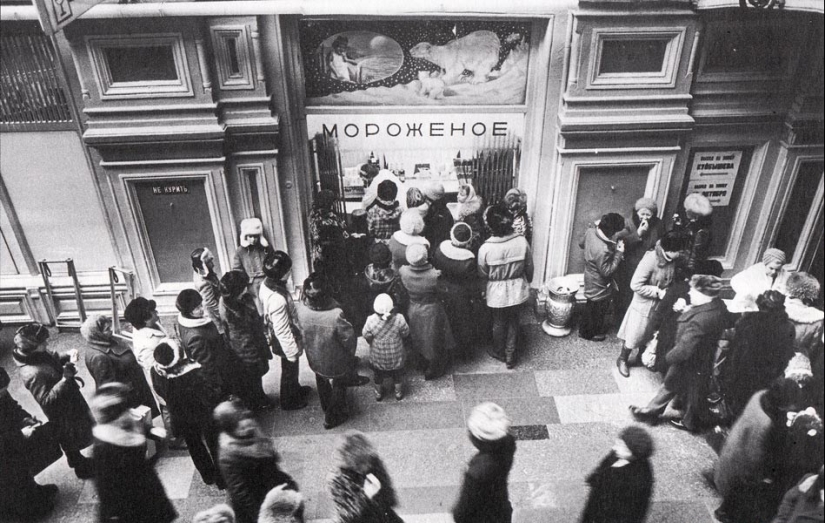
On the second and third floors, the premises were rented by a variety of organizations — there were, for example, foreign language courses (when I entered inyaz, I even attended them to improve my Spanish), I already talked about the polyclinic, there was also a printing house on the first floor at the corner of Ilyinka and Vetoshny.

With the beginning of spring, the fountain began to work, and a brass band played on the balcony above it, as in city parks. By the way, one of the shops near the fountain was a commission, with all sorts of precious metals products. According to rumors, the property of "enemies of the people" was being sold in it. I once bought a silver spoon there as a gift to my mother, there were no such things in ordinary stores.
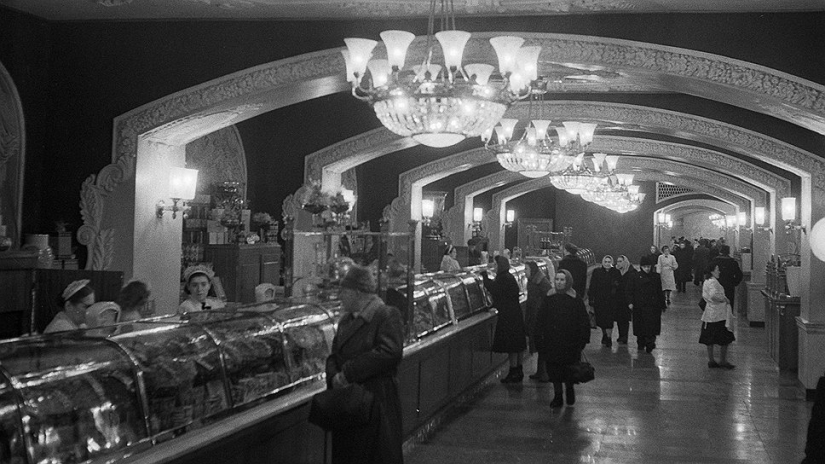
There was a meeting room in the Showroom, and concerts and movies were often held there, in these cases we, GUM residents, were also allowed there. When the funeral of Nadezhda Alliluyeva was held in 1932, GUM residents got something. I then saw very beautiful flowers in pots at our neighbors, and when I asked where they came from, they answered me that after Alliluyeva's coffin was taken to the cemetery, the flowers from the hall were allowed to be sorted by room.

The proximity to the Kremlin didn't particularly bother me then, it all seemed natural. Ilyinka was a government highway, at night I sometimes woke up from the fact that a signal bell was ringing at the Spassky Gate and government cars were leaving the Kremlin, under our windows they were rushing towards the Central Committee on the Old Square, or the clatter of hooves of mounted police could be heard. Therefore, "comrades in civilian clothes" were always on duty on the street, I knew them all perfectly by sight, and they knew me. One day my mother put my felt boots out to dry on the windowsill, and they were blown down — frightened "comrades" immediately came running to check, my mother even had to write an explanatory note.
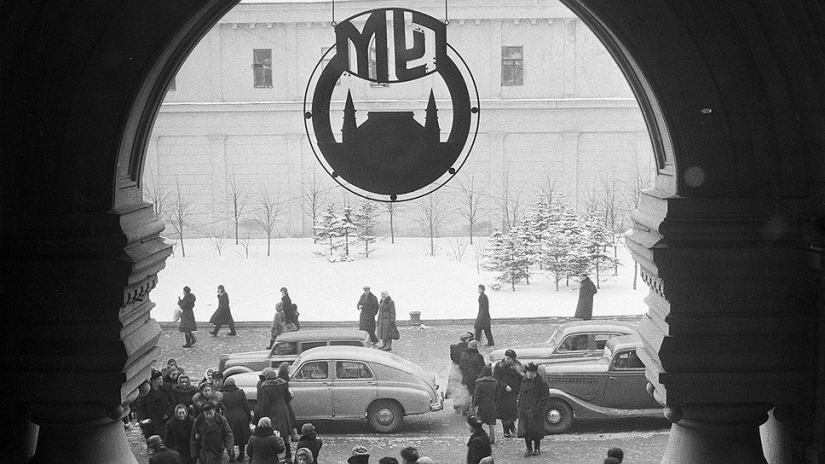
Since 1936, during the parades on Red Square, that is, several times a year, a military man certainly sat in our room, his duties included making sure that none of the adults approached the windows. But I was a little girl — and they always allowed me to peek: I lay down on the windowsill and watched with all my eyes as Voroshilov rode out of the Spassky Gate on a white horse.

No one was surprised that I live in GUM. And in the 1930s, and especially after the war in Moscow, where only people did not live, in any way. Housing in GUM was no surprise to anyone. My friends loved to visit us, my mother arranged such interesting evenings. And the guests did not mind that the toilet is public and the hostess asks them to grab a bucket of water from there."

In 1953, when GUM was decided to be completely given over to a department store, 22 families lived in the building — no less than 85 people. All of them were resettled in other houses.
Recent articles

If it seems to you that the New Year holidays are being celebrated somehow incorrectly, then you definitely haven't seen these ...

While the sun practically disappeared from the sky above the Arctic Circle and the night seemed endless, the Vikings prepared to ...

Sometimes reality presents us with amazing coincidences. Objects blend perfectly into the background, animals become invisible in ...